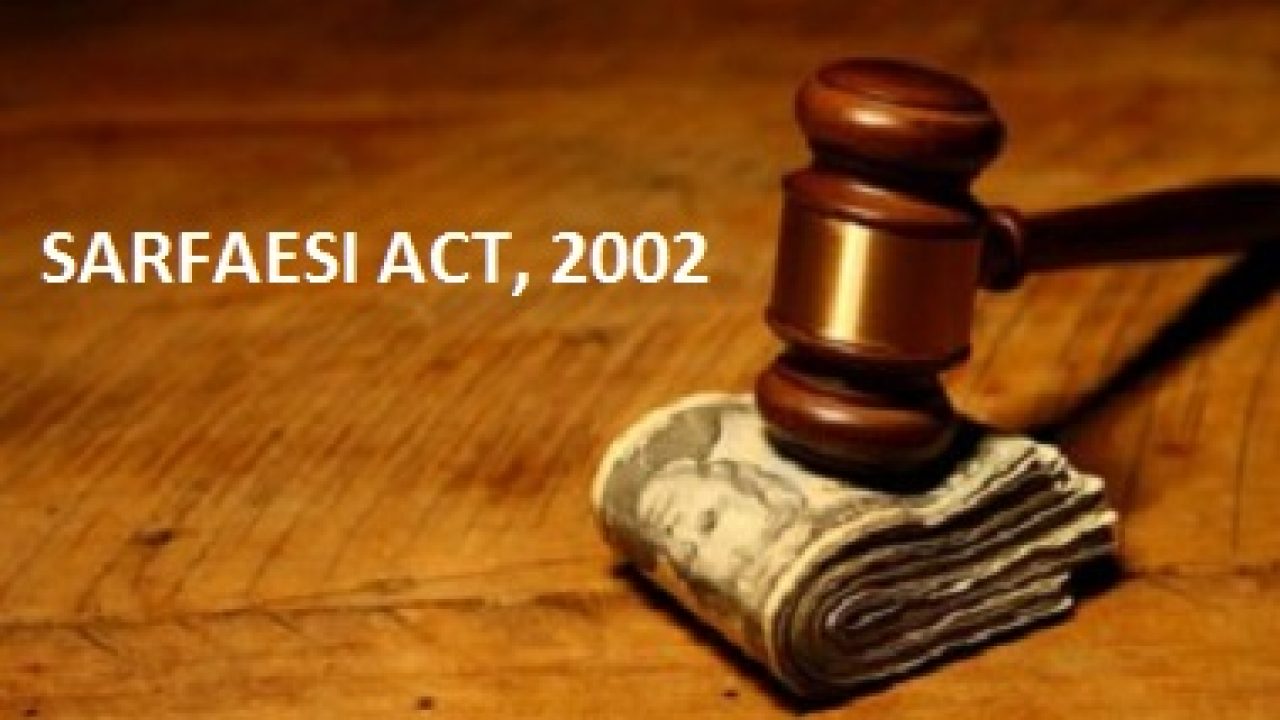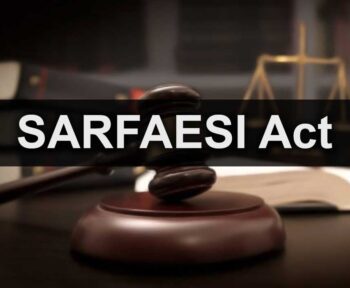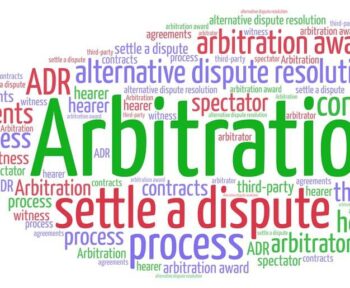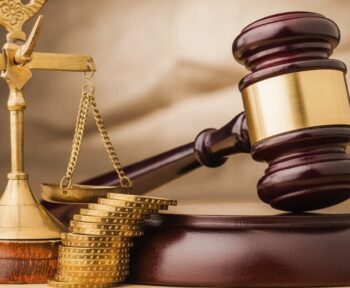Introduction
In developing countries, the financial sector has played a vital role as it has increased the economy of the Country. Securities and debt are the latest systems that are introduced in the financial sector. As the latest techniques are introduced, the law should also be adapted according to the changes made in society to keep pace. As there are a lot of defaults made by the borrowers who took a loan from the bank, financial sector, etc. and fail to return it within a given time period. For such situation Legislation has introduced a provision under Company Act 1956 but it was time taking and having lacuna, therefore the provision was removed from Company Act 1956 and the power was vested in the new Act given by the Legislation i.e the Recovery of Debts Due to Banks and Financial Institutions Act 1993 (hereinafter RDDBFI Act). The RDDBFI Act was introduced to reduce the burden of the Court, as it is a Special court also known as Debt Recovery Tribunal which played an important role where they have to recover outstanding loans which is due to the bank and financial sectors. But the Debt Recovery Tribunal was not effective as it has drawbacks, for instance, it took cases that amounted to more than Rs. 10 lakh. Debt Recovery Tribunal was overburdened by the lots of cases as it deals with the loan recovery cases into the bank and financial sector. In order to overcome the above issue, the government set up a committee, called, Narsimham Committee I & II and Andhyarujina Committee which recommended Securitization and Reconstruction of Financial Assets and Enforcement of Security Interest Act 2002, (hereinafter SARFAESI Act) to protect the Non-Performing Assets (hereinafter NPA) which help the bank and financial sector to recover money from the borrower and also protect the economy. For that, the bank and financial sector sell those secured assets to the Asset Reconstruction Company which loan on the secured asset. This gives benefits to the bank and other financial sectors.
Enforcement of Security Interest
Section 13 of the SARFAESI Act is about the enforcement of security interests in the case of NPA. One needs to understand NPA before starting with the enforcement of security interests.
Non- Performing Interest:
Non-Performing Asset is defined under section 2(o) of SARFAESI Act which states that asset or account of the borrower which is classified by the bank or financial institution as sub-standard, doubtful or loss assets, according to the direction or guideline, given by the Reserve Bank of India or the bank or financial institution.
Further, RBI has released a circular in 2015 which has defined NPA i.e. Non- Performing Assets under para 2.1 which states that non-performing assets are those assets that put a halt to generating income for the bank, it also includes lease assets. Further, Para 2.1.2 of the circular states that an NPA is a loan or advance given by the bank or financial sector to the borrower, where the interest or the installment remains due for a period of 90 days or more or the account remains ‘out of order’ which means “if the outstanding balance remains continuously in excess of the sanctioned limit/drawing power for 90 days ”.
The NPA is classified into three assets as mentioned under section 2(o) of the Act:-
1. Substandard:- These assets are NPA for a period of 12 months or less, which will cause the liquidation of debt and also cause economic loss to the bank or financial institute.
2. Doubtful Assets:- These are the assets that come under the substandard assets for a period of more than 12 months.
3. Loss Assets:- These are the assets where the loss of the assets is identified by the Bank or financial sector or RBI and which are not written off.
The 2005 Guideline released by the RBI states that banks, the financial sector, or the non-banking financial sector can sell or purchase NPA from any other bank or financial sector or non-banking financial sector.
Secured asset:- section 2(zc) defines secured asset which means “the property on which security interest is created”.
Secured creditor:- is defined under section 2(zd) which state that any bank or financial institution or group of bank or any consortium which includes debenture trustee appointed by a bank or financial institution or securitization company or reconstruction company or any trustee holding securities on behalf of the bank or financial institution, in whose favor a security interest is created on any default of repayment by the borrower.
SECTION 13 OF SARFAESI ACT 2002:-
Section 13(1) of the Act states that “Notwithstanding anything contained in section 69 or section 69A of the Transfer of Property Act, 1882 (4 of 1882 ), any security interest created in favor of any secured creditor may be enforced, without the intervention of the court or tribunal, by such creditor in accordance with the provisions of this Act”. Further, section 13(2) states that if the borrower makes any default in repayment or in paying installation which he is under a liability to pay to the secured creditor and that asset is classified as a non-performing asset by the bank in that case the secured creditor sends a notice to the borrower in writing for the discharge of all his liability within 60 days and if they are not able to pay off then, in that case, the secured creditor will exercise all his right on that asset. Once the borrower receives the notice he cannot sell or transfer the property unless prior permission of the secured creditor is mentioned under clause 13 of the Act. The notice should mention the detail about the amount which the borrower has to pay and the enforcement of secured creditor rights on the non-performing assets according to section 13(3) of the Act.
Further, sub-clause 4 of section 13 of the Act states that in case the borrower fails to pay the amount or installment then the secured creditor can take possession or management over the assets of the borrower which also give the right to the creditor to transfer the property through lease, assignment or sale. They can also appoint a manager to manage the asset which is taken over by the secured creditor, further it also mentions that any person who has acquired any of the secured assets or has any due to the borrower can pay the amount to the secured creditor which is sufficient to repay off the secured debt.
According to sub-clause 5 of the given Act, it states that if anyone repays the amount which is due by the borrower, in that case, the secured creditor gives a valid discharge of the asset as if it was paid by the borrower itself. The transfer of property under sub-clause 4, it will also transfer the right vested on that property to the person mentioned under sub-clause 4 of the Act. Further, according to sub-clause 7, if any expense incurred by the secured creditor because of the action brought by the borrower, all such expense is to be recovered from him. But if the borrower pays off all the due addition to that expense at any time before the fixed date for the sale of the property, in that case, the secured creditor will neither transfer nor will take any further action to transfer the secured assets as mentioned under sub-clause 8 of the Act.
In case of financing of a financial asset by more than one secured creditors or joint financing of a financial asset by secured creditors, no secured creditor will be entitled to exercise any or all of the rights unless the exercise of such right is agreed upon by the secured creditors having not less than three-fourth as mention under clause 9 of the Act. Provided that if the company is liquidated then the amount which is received after the sale of secured assets is distributed according to section 529A of Company Act 1956, further, in case company is wound up and the secured creditor opted for security than in that case he can retain the sale proceeding after deposition of workmen’s dues as mention under section 529A of Company Act 1956. But if the workmen’s due are unascertained, then the liquidator can make an estimated amount for workmen’s due. If the amount paid by the secured creditor for workmen’s due is more than he is entitled to take the excess amount from the liquidator or if the amount is less than a secured creditor is liable to pay the balance amount to the liquidator. Further, the secured creditor furnishes an undertaking to the liquidator to pay the balance of workmen’s due.
Besides this, if the secured creditor has not received the full amount from the proceeds of the secured assets, the secured creditor may file an application to the Debt Recovery Tribunal having competent jurisdiction to balance the amount, as mentioned under clause 10 of the Act. According to clause 11 of the given act if there is any guarantor or if there are any pledge assets then the secured creditor will recover their money from them before taking any measure as mentioned under subsection 4 of the given act.
Article By : Pooja Gupta





